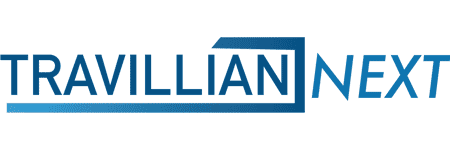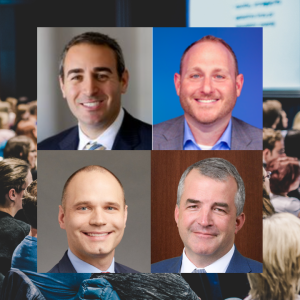Charlottesville, VA-based Blue Ridge Bankshares and Richmond, VA-based Bay Banks of Virginia announced a $100 million merger on August 13th. This MOE marks a possible trend that may be more common post-COVID. We had the chance to speak with Brian Plum, CEO of Blue Ridge and the named CEO of the combined company, as well as Randy Greene, CEO of Bay Banks of Virginia and named COO of the new entity. Our conversation covered details of the deal but also chronicles their future integration and strategy around technology, branch consolidation, recruiting, and succession planning.
Travillian: This deal doubles the asset sizes [of your banks] and is more of a contiguous rather than in-market transaction. What brought the deal together? Was it scale, efficiencies, or were there other things that made this really the transaction that both of you were willing to execute?
Randy Greene: It was a little of all the above. One of the things this gave us is a much larger balance sheet to serve our communities. Both of us had some rural origins and had expanded out over the last few years, for Bay Banks to Richmond and to Hampton Roads since 2017. It was a great opportunity to keep this momentum going. Over the last three or four years, we have done a lot of the same things and it just made sense to combine forces.
Brian Plum: Not only do we have over a $2 billion bank with great geographic exposure in Virginia and North Carolina, we also have business lines that range from wealth and trust to mortgage to consumer credit cards, payroll services, and insurance. It gives us the opportunity to not just to build geographically, but also from a business line perspective, whether it’s consumers, commercial entities, nonprofits, a whole suite of financial services that puts us on par with much larger banks. We think this competitively positions us well in those markets as we look to grow and expand the number of customers we have.
Travillian: What were each of you looking for in a partner and then what things have you done to mitigate the risk in the transaction?
Brian Plum: The key thing with an MOE is partnership. You identify culturally and from a business standpoint somebody that you complement well philosophically. The key driver in any MOE is somebody you trust. This is a conversation we have talked about at a high level for a while. A comfort level must exist when you do a transaction like this.
Randy Greene: Brian and I talked on several occasions on what this might be like to put the two banks together. I think we both settled into our new sizes and it seemed the right time to go one more step forward. We can provide a lot of better services and have just scratched the surface in Richmond, Virginia Beach, and Charlottesville. This combination will allow us to expand in those markets.
Travillian: Things are still somewhat cloudy for the industry on credit quality, deferrals, and the PPP program. Can you talk about credit quality in this transaction?
Randy Greene: What we found is we had similar loan portfolios. The culture on credit had been pretty much the same. We did not see a lot of surprises, but COVID did slow us down. We were talking early in the year and wanted to step back and get our arms around the changes. We started talking again after we felt like we had some control over where we would go with COVID related credits. We do not have all the answers, but think we know today what the bottom is.
Travillian: Our firm provides stress testing for community banks and we were curious how you came up with a loan mark and what kind of analysis did you do?
Brian Plum: The credit mark is a best guess and given this environment more work goes into that. Uncertainty is elevated and there is no way around that. We are always stress testing portfolios, but even more so now. Where we are going to end up is going to be some combination of what happens economically, what happens with COVID-19 and how much it moves things going forward. We try to create what you do in a normalized environment. What is my most likely outcome, recognizing that there could be deviations, but take all the information you have available, determine what you think is the most probable path, and then build financials around that.
Randy Greene: We both took a broad sweep at this thing when it first happened. We know the number we have had in modifications for the different loan categories. The six month modifications will be maturing this fall; what we are hearing is customers may not need help next round. Some are saying, “I might need some help the second round,” but the positive news is the number in this category is not growing. It seemed to be stabilized. There will be some fallout. It is just one of these things that banks are monitoring on almost a daily basis.
Travillian: Scale is obviously key now that rates are low for longer. How does this merger help you from a digital and innovation angle? Does this allow you to spend more money on the nontraditional channels for delivery to your customers?
Brian Plum: Technology investment is front and center. We have seen this heightened, post COVID-19. What we are seeing is more customers engaging with us digitally, which means we are going to have to be more competitive with offerings. You are also conditioning customers when you have them in the digital channel to what they will accept from competitors. As you transition people to a more digital environment, the resistance level to dealing with pure online only banks is going to be lower because they are dealing with you through that channel now. That means the services and features we offer must be competitive with a whole new set of competitors. And we must be able to invest in that and the investment comes in the form of software and talent.
Travillian: Thinking about scale, the efficiencies in this transaction are 10.5% on the combined franchise since there is no branch overlap. What are the expense savings in the deal, and will you look at some of the branches as a part of this transaction?
Randy Greene: We both had some work to do there. It was delayed with COVID but will pick back up. We have some smaller branches that we will be looking at. It is interesting, we have opened more accounts through the drive through than we ever did with a lobby.
Travillian: I agree and think we are going to see the industry transition to less physical space or different physical space. How accretive do you think this deal can be to earnings?
Brian Plum: We are looking at accretion in the high single digits, low double digits through some of the efficiencies with scale. Over time we see additional operational efficiencies through technology. The key thing as we think about scale is the ability to invest in technology. With scale it is easier to build out the CRM platform. We are always focused on productivity over efficiency.
We are always thinking about how do we maximize the revenue of every dollar that we spend? The smaller you are, the harder it is to corral those resources effectively. Coming together and being an over $2 billion institution with a strong earnings profile, one of the most critical things we can do moving forward is to implement that CRM platform to allow us to get better penetration with our clients.
With more wallet share, we have more penetration in relationships that we can create stickiness. And the stickier each relationship is the easier it is to have strong balance sheet growth over time. It is not just about what do we not have to spend in the future but spending money on new things that help us be even more successful.
Travillian: From a succession planning standpoint, you both had your own independent succession strategies. How has that merged into one organization?
Brian Plum: With additional scale, it gives you the ability to talk about succession, that next level of talent you need to establish continuity. That is one of the biggest challenges right now and has been for a while. With more scale, you have an attractive platform to bring in talent and attract people to guide the organization. I do not think about it just at the CEO level. It is about having succession, down into the entire organization and that additional scale gives you more flexibility.
As you think about evolving and changing the customer experience of technology, you must start looking outside of financial services to get some talent you need that may be more IT-based. Establishing a reputation and vision to attract talent is important. Otherwise you are viewed as a stagnant or sleepy community bank where people go and then are bored in six months.
Randy Greene: Our bank had some growing pains in 2017 with the last merger and we assembled a $2 billion team. We have quite a team not just administratively, but also on the lending side and the credit side. One of the things that Brian and I are talking about right now is where the holes are. Getting the right people in the right seats.
Travillian: If you flashback to a year ago, perhaps you were heading towards a transaction like this. How does that shape your thinking around preparing a team for doubling in size and merging two entities?
Brian Plum: I believe the challenge is even if you think you are going to do M&A, ultimately you have a team to execute the vision. You think of your bank as a standalone entity because you can never be sure on M&A happening. I think that is a challenge you must balance. Particularly if you are a growing bank, either the scrutiny is that much more for regulators to ensure you presently have the right processes and people in place.
Travillian: The big challenge for the industry today is that rates are low and margins are under pressure. Does this deal create the opportunity to lower the cost of funds and defend the margin? And are there pieces of loan portfolio that you want to grow faster than others relative to the entire book?
Brian Plum: With the larger balance sheet there are more efficiencies embedded in the whole operating model. Part of it falls back to investing in technology and we focus on what we refer to as the effective cost to funds. If you are investing in technology or branches to bring in deposits, each channel has its own cost. We make sure we are thinking about that component holistically. If the cost of funds comes from low balance branch networks, then your effective cost of funds could be significantly higher than somebody who has higher cost of funds, but just a more efficient operating model.
It is not just about interest or operating expense. It is about what those two look like combined. From a business opportunity with the combined balance sheet, there is creating the better experience and just something that’s more functionally efficient meeting people where they are. We are going to have some opportunities with the loan limit size that we have, the markets that we are in.
When you have some larger relationships, there is an embedded efficiency that comes with those. But it is not going to be a fundamental shift in the commitment we have to the current targeted consumers, small and midsize businesses, and municipalities nonprofits. As we have talked about breadth and depth within an organization, it gives us the ability to do more better. This opens the ability to upsize some of the relationship sizes we can target.
Travillian: Fee income is a way to offset the pressure on loan yields. Will you move some of the businesses onto each other’s platform, and are there any other lines of business that you are thinking about?
Brian Plum: Bay Banks has a good mortgage and wealth management platform. We will be looking to integrate that and drive both sides. With depressed interest rates and where things are, noninterest income components are front and center. That is going to be a real differentiator for this combined bank. This also deepens relationships, and ultimately that is the real value in this business. We can have the transactional things, but ultimately the relationships themselves is where the value is and what creates long term sustainable value. By having different noninterest income lines, it creates the immediate income statement impact, but more important strategically is it defines the future for us as we keep and maintain those relationships.
Travillian: Thank you for the time today, gentlemen.
The Travillian Group’s Banks and Credit Unions practice provides Search and Talent Advisory (TTG|Align) services to depository institutions across the country. Established in 1998, the firm has built a unique platform that touches every corner of the industry.
Our search and advisory professionals focus on building long-term, trust-based relationships with Boards, Executives and HR professionals. They assist our clients in the hiring of high quality, hard to find talent and provide full-life cycle consulting in such areas as succession management, leadership development, employee engagement, recruitment strategies and compensation.






